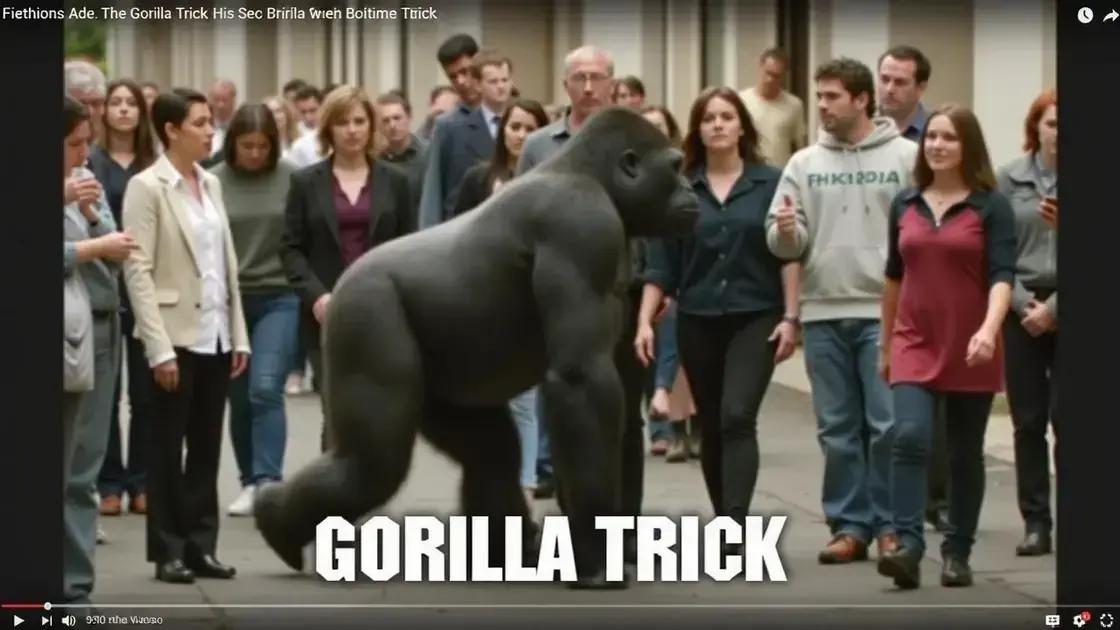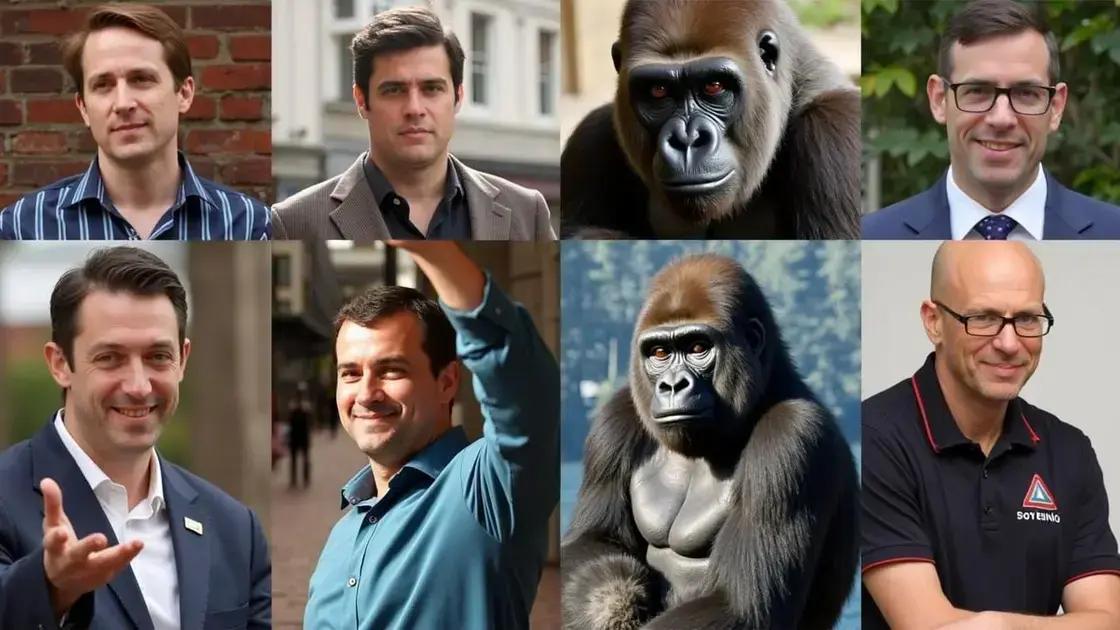The Gorilla Trick showcases how selective attention can lead to significant oversights, as evidenced by viewers missing a gorilla walking through a scene while counting basketball passes. Experts in psychology affirm its relevance for understanding perception, making it valuable not only in entertainment but also in educational and professional applications.
Have you ever wondered if the Gorilla Trick is a legitimate method or just a clever illusion? In this article, we delve into the world of the Gorilla Trick, examining its origins, the claims made about it, and whether it is truly backed by professionals. By uncovering insights from experts, we aim to clarify the effectiveness of this technique. Join us as we explore what the Gorilla Trick really entails and what knowledgeable professionals have to say about its credibility.
Understanding the Gorilla Trick

The Gorilla Trick is a fascinating method often seen in various performances and tricks that challenge our perception. It plays with our attention and focus, leading us to wonder how it is done. But what does the trick really involve?
What is the Gorilla Trick?
The Gorilla Trick often refers to a classic psychology experiment that illustrates how easily our brains can be fooled. In this trick, viewers are shown a video where they must focus on counting specific actions, like players passing a basketball. Meanwhile, something unexpected happens, like a person in a gorilla suit walking through the scene. Many viewers don’t notice the gorilla, highlighting our selective attention.
How It Works
This trick demonstrates how our brains prioritize information. When we concentrate on one task, other stimuli in our environment can go unnoticed. The Gorilla Trick shows us that we may be blind to things right in front of us if we focus too hard on something else. It’s a powerful reminder of how our attention works.
The Science Behind It
Psychologists use methods like the Gorilla Trick to study cognitive processes. Research shows that selective attention can lead to cognitive illusions, where we completely miss significant details. This has implications not just in entertainment, but also in real-life situations, such as driving or watching out for important events.
Applications in Real Life
Understanding how the Gorilla Trick operates can be valuable. It helps raise awareness about our perceptual limitations, encouraging people to be mindful when attempting to focus. In daily life, this knowledge can enhance safety and efficiency; for example, being more alert while driving or in critical environments.
Expert Opinions on the Gorilla Trick

Expert opinions on the Gorilla Trick provide valuable insights into its legitimacy and application. Professionals in psychology and attention research analyze this trick to better understand how we process information.
What Do Psychologists Say?
Psychologists emphasize that the Gorilla Trick is an excellent example of selective attention. They note that it highlights how easily our minds can be misled when fixating on a task. Dr. Daniel Simons, a cognitive scientist known for his work on this phenomenon, reiterates that when people focus too hard on counting basketball passes, they become blind to changes happening around them, such as the gorilla walking through.
Magicians’ Perspectives
Magicians also appreciate the Gorilla Trick for its educational value. James Freedman, a seasoned magician, says that understanding the trick allows performers to use similar tactics in their acts. Tricks relying on misdirection, like the Gorilla Trick, can create a powerful illusion. David Copperfield recognizes that by mastering these concepts, performers can enhance their shows and engage audiences more effectively.
Applications Beyond Entertainment
Experts agree that the implications of the Gorilla Trick extend beyond entertainment. Notably, it can inform training methods in various fields like education, driving, and security. By developing awareness of selective attention, individuals can learn to observe their surroundings better, enhancing safety and effectiveness in critical situations.
Overall, the consensus among experts is that the Gorilla Trick serves not only as entertainment but also as a practical tool for improving our understanding of perception and attention.
Wrapping Up: Is the Gorilla Trick Backed by Professionals?
In conclusion, the Gorilla Trick provides a striking illustration of selective attention and the psychological principles behind it. Experts in psychology, magicians, and professionals across various fields recognize its significance in enhancing our understanding of perception.
By examining expert insights, we gain a deeper appreciation for how attention can influence our experiences. The trick is not only a fascinating spectacle but also a valuable teaching tool that applies to real-life situations.
Ultimately, appreciating the Gorilla Trick’s effectiveness invites us to reflect on our own attention and awareness, leading to growth in both our personal and professional lives.
FAQ – Frequently Asked Questions about the Gorilla Trick
What is the Gorilla Trick?
The Gorilla Trick is an experiment illustrating selective attention, where viewers miss unexpected events while focusing on a specific task.
Who created the Gorilla Trick experiment?
The Gorilla Trick experiment was popularized by psychologists Daniel Simons and Christopher Chabris in their research on attention.
Why is the Gorilla Trick significant?
It demonstrates how our focus can blind us to unexpected stimuli, highlighting important psychological principles about perception.
How can the Gorilla Trick be applied in real life?
Understanding the principles behind the Gorilla Trick can improve awareness in daily activities, such as driving and observing surroundings.
What do experts say about the Gorilla Trick?
Experts emphasize its value in showing the limitations of attention and its application in training and awareness-building programs.
Can the Gorilla Trick be used in education or training?
Yes, it can serve as a practical tool for teaching concepts of attention and perception in various educational and training settings.












